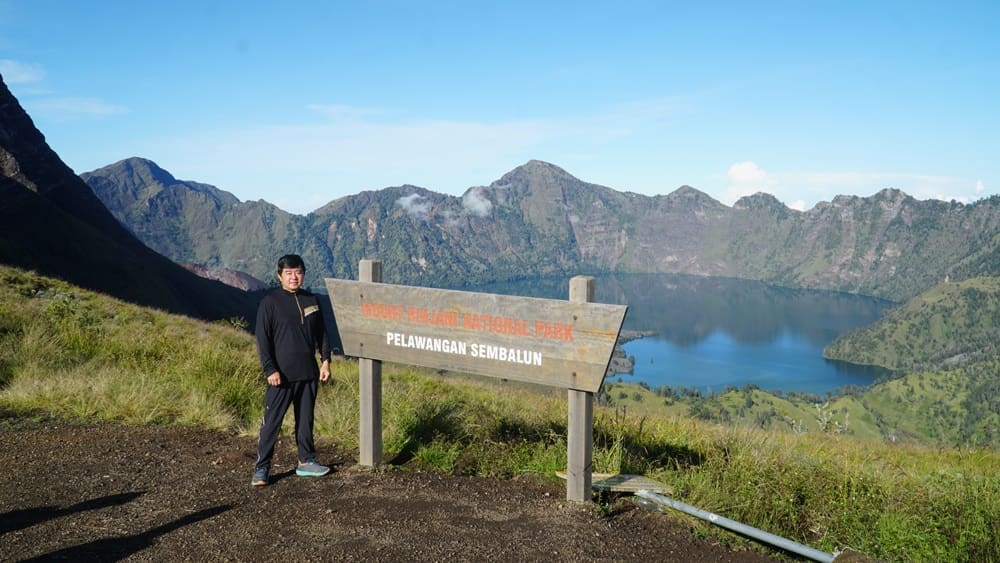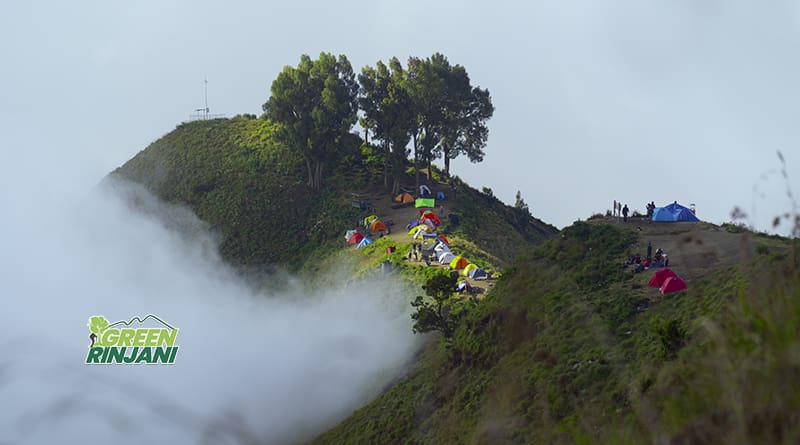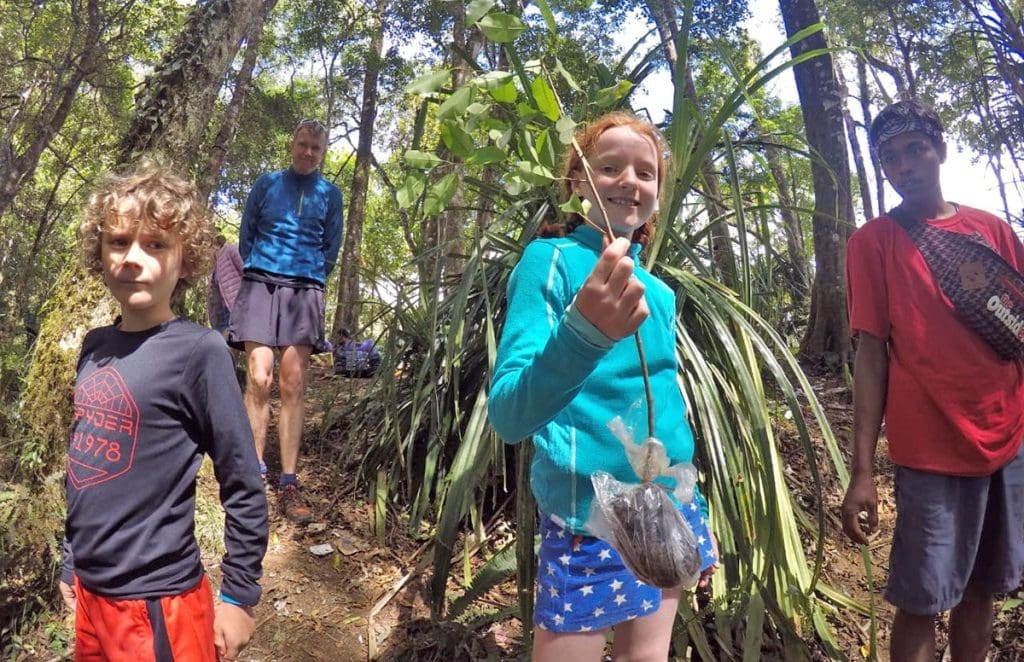Rinjani Trekking Route
Mount Rinjani Trekking Route Complete Guide 2025 Introduction
Mount Rinjani (3,726 m) is one of Indonesia’s most iconic volcanoes and a dream destination for trekkers from around the world. Trekking Rinjani is not just about reaching the summit – it’s about experiencing a journey that combines wide savannas, dense rainforests, volcanic craters, natural hot springs, hidden waterfalls, and breathtaking panoramic views.
Since the 2018 Lombok earthquake, the mountain trails have been carefully restored and are now open for climbers. Today, trekkers can choose between three main official routes – each offering a different atmosphere, challenge level, and highlight for Rinjani trekking route :
Sembalun Route: The most popular way to reach the Rinjani summit, featuring vast grasslands and the famous “Regret Hill.”
Senaru Route: Known for its lush rainforest, crater rim sunsets, and easier access for short treks.
Torean Route: A dramatic and adventurous trail with rivers, cliffs, and waterfalls, often chosen as a descent route from Segara Anak Lake.
Choosing the right route depends on your goal: Do you want to conquer the summit? Experience the crater rim and jungle? Or enjoy a scenic descent past waterfalls and rivers? This guide will help you understand the differences between each route so you can plan the trek that best fits your fitness level, time, and trekking style.
The trekking trail was repaired and declared safe for visitors, although there are some steep parts compared to before the earthquake.
Do you plan to visit Mount Rinjani this year?
Here are three different rinjani trekking routes. Recommended for you:
Sembalun Trekking Route
The Sembalun trail is the most popular choice for trekkers aiming to reach the summit of Mount Rinjani (3,726 m).
Starting at 1,100 m in Sembalun village, this route takes you across vast savannas with sweeping mountain views. The highlight – and challenge – comes at “Regret Hill”, a steep 60-degree climb that tests your stamina before reaching the Sembalun Crater Rim at 2,639 m. From here, trekkers camp overnight before attempting the summit climb at dawn.
Resting Posts
- Pos 1 (1,300 m)
- Pos 2 Tengengean (1,500 m)
- Pos 3 Padabalong (1,800 m)
- Pos 4 (2,100 m)
- Sembalun Crater Rim (2,639 m) – campsite with breathtaking sunset views.
The Sembalun route is the shortest and most direct way to the summit, making it ideal for those with limited time but good fitness. Most summit programs (2D1N, 3D2N, 4D3N) include this trail.
Senaru Trekking Route
The Senaru trail is famous for its lush tropical rainforest, abundant wildlife, and dramatic crater rim views.
Starting from Senaru village (601 m), this route climbs steadily through jungle to reach the Senaru Crater Rim (2,641 m). It’s the perfect choice for trekkers who want to experience the beauty of Rinjani without going all the way to the summit. The rim offers stunning sunrise and sunset views over Segara Anak Lake, Mount Baru Jari, and the Rinjani summit.
Senaru Route Overview
- Starting Point: Senaru Village (601 m)
- Main Destination: Senaru Crater Rim (2,641 m)
- Duration: 1–5 days (depending on program)
- Difficulty: Moderate to challenging
- Elevation Gain: 2,040 m
Rest Stops Along the Route
- Post 1 (915 m) – transition from village to jungle.
- Post 2 (1,500 m) – forest thickens, trail steepens.
- Post 3 (2,000 m) – common campsite below the rim.
- Extra Post (2,200 m) – optional rest stop.
- Senaru Crater Rim (2,641 m) – panoramic viewpoint of the caldera, lake, and summit.
The Senaru route is flexible, with options ranging from a 1-day trek to the rim, to 2D1N crater camping, or longer treks combining the lake, hot springs, and summit via Sembalun.
Torean Trekking Route
The Torean trail has become increasingly popular after the 2018 earthquake and is now the preferred descent route from Segara Anak Lake.
Starting at 585 m in Torean village, the trail winds through valleys, rivers, cliffs, and waterfalls.
While shorter in elevation gain compared to Senaru, it is steep and slippery in sections, requiring extra caution. The highlight is passing the dramatic Penimbungan Waterfall and following scenic river valleys all the way to the village.
Torean Route Highlights
- Starting Point: Torean Village (585 m)
- Lake Access: Direct descent from Segara Anak Lake (±2,000 m)
- Duration: 2–3 days (commonly as part of a 3D2N or 4D3N trek)
- Difficulty: Moderate but technical (steep, rocky, slippery sections)
- Scenery: Valleys, rivers, waterfalls, and lush green landscapes.
The Torean route is rarely used as the main ascent trail but is highly recommended for a scenic and adventurous exit from the lake.
Exit Routes from Segara Anak Lake
When you arrive at Segara Anak Lake (±2,000 m) from the Sembalun Crater Rim, you have two options for your descent: via Senaru or via Torean.
Via Senaru – From the lake, trekkers must climb back up to Pelawangan Senaru (2,641 m) before starting the descent. The trail then continues down a long and steep jungle path. This option is physically demanding but highly rewarding, offering breathtaking panoramic views from the Senaru Crater Rim over the valleys, crater lake, and sweeping landscapes of Lombok.
Via Torean – Instead of climbing back to the rim, the Torean trail descends directly from the lake. While this avoids the extra uphill climb, sections of the trail are steep, rocky, and slippery, requiring careful footing. The reward is one of Rinjani’s most scenic descents: lush valleys, towering cliffs, winding rivers, and hidden waterfalls make this route an unforgettable way to finish your trek.
Which rinjani trekking route should you choose?
There is no single “best” route – it depends on your preference. The Senaru route offers dramatic mountain panoramas from high above, while the Torean route delivers a closer connection to nature with valleys, rivers, and waterfalls. Both are spectacular in their own way, and either will leave you with lasting memories of Rinjani.
Trekking to Segara Anak Lake via Torean
After the 2018 Lombok earthquake, the Torean trail became one of the most frequently used routes to reach Segara Anak Lake. It is not a “shortcut,” but it offers a more scenic and varied journey compared to other trails, with valleys, waterfalls, and river crossings.
The trek begins in Torean Village (585 m), usually in the early morning. Unlike other routes, you do not reach the lake on the first day. Instead, you’ll spend the night at Propok Camp (1,585 m), then continue to the lake on the second day.
The Journey Step by Step
Day 1: Torean Village → Propok Camp (1,585 m)
- Start from Torean Village (585 m) in the morning.
- Trek through tropical rainforest, home to wildlife such as the lutung (black monkey) and various bird species.
- Pass Pintu Masuk (779 m) and Post 1 (821 m).
- Continue to Post 2 Birisan Nangka (1,078 m).
- Reach the famous Penimbungan Waterfall viewpoint (1,299 m) — a highlight of the trail.
- Climb steadily to Post 3 (1,355 m) and finally to Propok Camp (1,585 m).
- Overnight camping here with dinner prepared by your trekking team.
Day 2: Propok Camp → Segara Anak Lake (2,000 m)
- After breakfast, continue the trek with a mix of uphill and downhill paths.
- Walk through valleys, rivers, and rugged volcanic landscapes.
- Arrive at Segara Anak Lake (2,000 m) by midday or afternoon.
- Camp by the lake, enjoy the view of Mount Baru Jari, and, if desired, soak in the natural hot springs.
Day 3 (optional, depending on your program):
- Either trek back via Torean, or continue towards Senaru or Sembalun depending on your chosen package.
Why Choose the Torean Route?
- Unique overnight stop – Camping at Propok offers a quiet, natural atmosphere with fewer trekkers than the crater rim camps.
- Scenic diversity – Valleys, cliffs, river crossings, and the famous Penimbungan Waterfall.
- Less climbing – Avoids the steep ascent back to the crater rim required in the Senaru route.
- Trekking Packages
We offer three options that include the Torean trail:
- Torean → Propok → Lake (ideal for those who want a direct but scenic journey).
- Senaru → Lake → Torean (classic combination: crater rim views, lake, and a scenic exit).
- Sembalun → Summit → Lake → Torean (perfect for those who want to reach the summit before descending through Torean).
FAQ – Mount Rinjani Trekking Routes
Which Rinjani route is best for the summit?
The Sembalun Route is the most direct and popular path to the summit of Mount Rinjani.
Which route is best for rainforest and crater views?
The Senaru Route offers dense jungle trekking and spectacular crater rim views, perfect for shorter treks.
Is the Torean route easier?
Not exactly. While it avoids climbing back up to the rim, the Torean trail has steep, rocky, and slippery sections. It’s scenic but requires caution.
Can I trek Rinjani in 1 day?
Yes. The Senaru One-Day Trek takes fit hikers to the crater rim (2,641 m) and back the same day.
Which exit route should I choose – Senaru or Torean?
Both are amazing. Senaru offers sweeping crater views, while Torean features valleys, rivers, and waterfalls. The choice depends on whether you prefer panoramic mountain scenery or tropical landscapes.
Are the trails safe after the 2018 earthquake?
Yes. All official trekking routes (Sembalun, Senaru, Torean) have been restored and declared safe by the National Park authorities.
What time will we return after trekking?
Depending on your trekking program, you will usually return to Senaru/Sembalun around 2–4 PM. If continuing directly to the airport, expect to arrive at Lombok International Airport between 5–7 PM.
Is Mount Rinjani open now?
Yes. Mount Rinjani officially opens every year from April 1st to December 31st (closed January–March for recovery and safety).
Are entry tickets included in the trekking package?
Yes, all packages include the official Mount Rinjani National Park entry fee.
Can we go to the Gili Islands after trekking?
Yes, we can arrange transfers directly to the Gilis. Please note there is an extra cost of IDR 400,000 per group (up to 6 persons).
Can we fly to Bali after trekking?
Yes. Private transfers can be arranged to Lombok International Airport for flights to Bali or other destinations. Please note that you will usually arrive at the airport between 5–7 PM, so it’s best to book an evening flight







